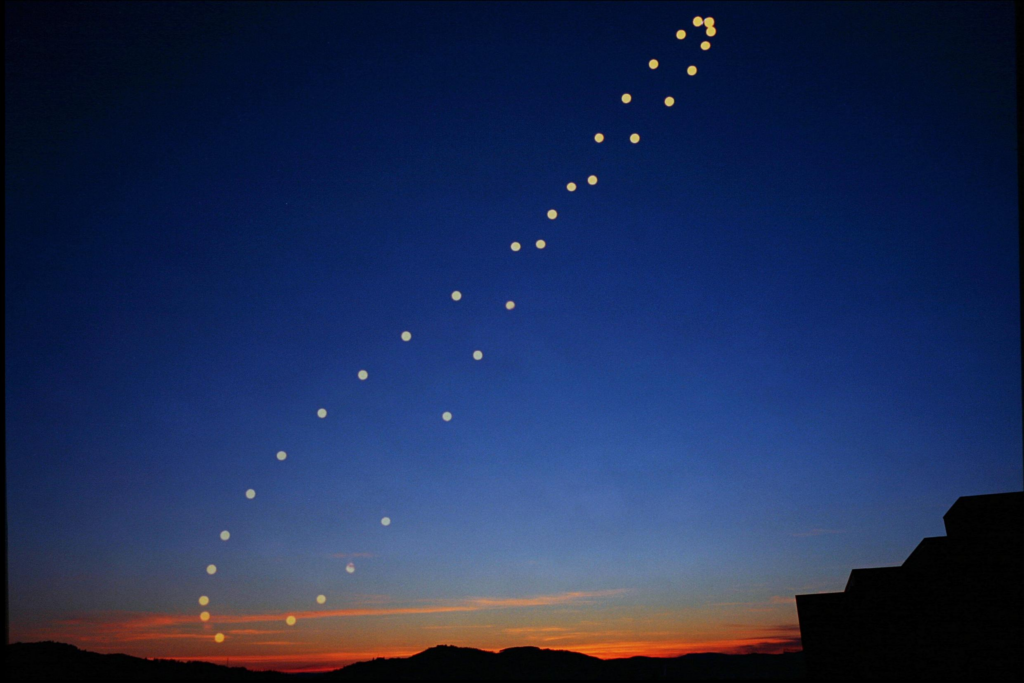Solar Analemma plots the Sun’s position in the sky at a specific place and time of day throughout the year.
If you photograph the Sun from the same position at the same time for a year, you will find that it forms a slightly oblong figure 8, with one loop wider than the other. Sun’s Analemma curve.
Figure 8—why?
Earth circles the Sun elliptically. Earth tilts 23.4 degrees as it orbits the Sun. These two components create the figure 8 Analemma curve.
Axial Tilt
As the Earth spins on its 23.4-degree axial tilt and orbits the Sun, the Sun seems to move up and down (North-South) in the sky. This creates the two figure 8 loops.
The summer solstice generates the upper loop of the figure 8 Analemma when the Sun rises higher in the sky.

After the summer solstice, the Sun’s apparent position starts falling, creating the figure’s first loop. Winter repeats this process to create the figure 8 curve’s second loop.
Earth Eccentricity
The Solar Analemma curve would be oval if the Earth’s orbital path was elliptical but its axis not inclined. This line is straight at the equator.
If the Earth’s orbit was round, its axial tilt would create a perfect figure 8 Analemma curve with equal top and bottom loops. Not so. The Sun is not at the center of Earth’s eccentric orbit. The Perihelion is closer to the Sun than the Aphelion.
Due to its orbital geometry, the Earth moves faster around the Sun during its Perihelion, around the Winter Solstice, than at the Apehlion. The curve’s bottom half flattens.
Location-Based Changes
In the Northern Hemisphere, the Analemma curve has a wider bottom loop. In the Southern Hemisphere, the larger loop tops the curve.
North Pole observers view just the top loop of the Analemma, while South Pole observers see only the bottom.
The Analemma’s orientation also depends on the observer’s Earth position.
Each of the 8 planets has a unique Sun Analemma. The Sun’s sky location relies on both the planet’s orbit and its rotating axis.

Greek Analemma means sundial pedestal. Analemma curves appear on several globes.
Map Your Analemma
Plot a Solar Analemma using a rod:
- Find a spot with a constant sunrise and sunset.
- Plant a pointed rod.
- Place a rod daily at the end of the first rod’s shadow. Instead of every day, do this on the same date and time each month to simplify things.
- Rods will form a figure 8 layout at year’s end. Solar Analemma.
- Mark the shadow spot on huge graph paper instead of rods.
Two things to remember while recording the sun’s position. First, mark shadows daily. Second, consider DST. Adjust marking time for DST.
